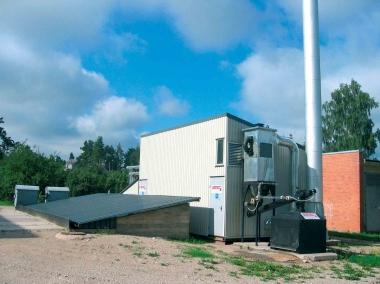
Heating of industrial premises, as well as theirgeneral heat supply, has always been considered a non-trivial task and required complex technical solutions. And it's not just their impressive size, which by definition requires considerable energy resources. The main problem is the specificity and purpose of such premises. After all, they, as a rule, are designed for certain, often unique technological processes that require the creation of special conditions (temperature, humidity, the degree of dustiness of the air, etc.).

You can not call exceptional cases whenWithin a single workshop or other production area, a number of working zones with different microclimate conditions must be created. In this variant, the heating of the production premises acquires the character of a complex task. And, naturally, the ways of its solution become more complicated. A production area on the plan is often denoted by three-digit numbers in square meters. Such huge scales also contribute to the complexity of this technical task.
Not to mention that each suchthe production complex is strictly limited to the close framework of normative acts, industrial sanitation requirements, as well as strict rules for explosion and fire safety. This, too, leaves its imprint on the design and construction of systems that are designed to ensure proper heating of production facilities.

Methods for calculating the capacity of heating systemsmust take into account such technical parameters as the dimensions of the heated room, the heat resistance of the enclosing structures. In addition, it is necessary to take into account the climatic conditions and weather characteristics of the terrain. All this is no less relevant, when it is planned to heat not only industrial premises, but, for example, heating a warehouse or other technical buildings.
Qualitatively heat even medium-sizedThe production complex with the help of water or steam heating systems is practically impossible. We will have to stretch out kilometers of distribution pipelines that will inevitably constrain passages, become elastic in the foundation of complex technological equipment, will intersect with power lines and control networks. In addition, the heating of production facilities in this way will throw an even more complex technical problem of achieving the stability of heavy and bulky pipelines in conditions of large-scale industrial production.

You can also add high density herecalled wandering currents, which is very typical for industrial premises. Such currents may well cause the phenomenon of electrochemical corrosion of water heating systems and condensate lines. In addition, equipping shops, production sites and storage facilities with pipelines is too complex and expensive.
Therefore, the overwhelming majoritycases are given to such type of heating, as air heating of industrial premises. Its principle is simple enough and does not require additional costs. Air, heated by heat generators or water heaters, through special air ducts is sent to heated areas. And the quality of heating does not depend on the number of these zones. Hot air is spread by distributing heads or powerful fans. As a portable equipment you can use special heat guns, which can easily be moved between zones. They create an even more impressive effect.
